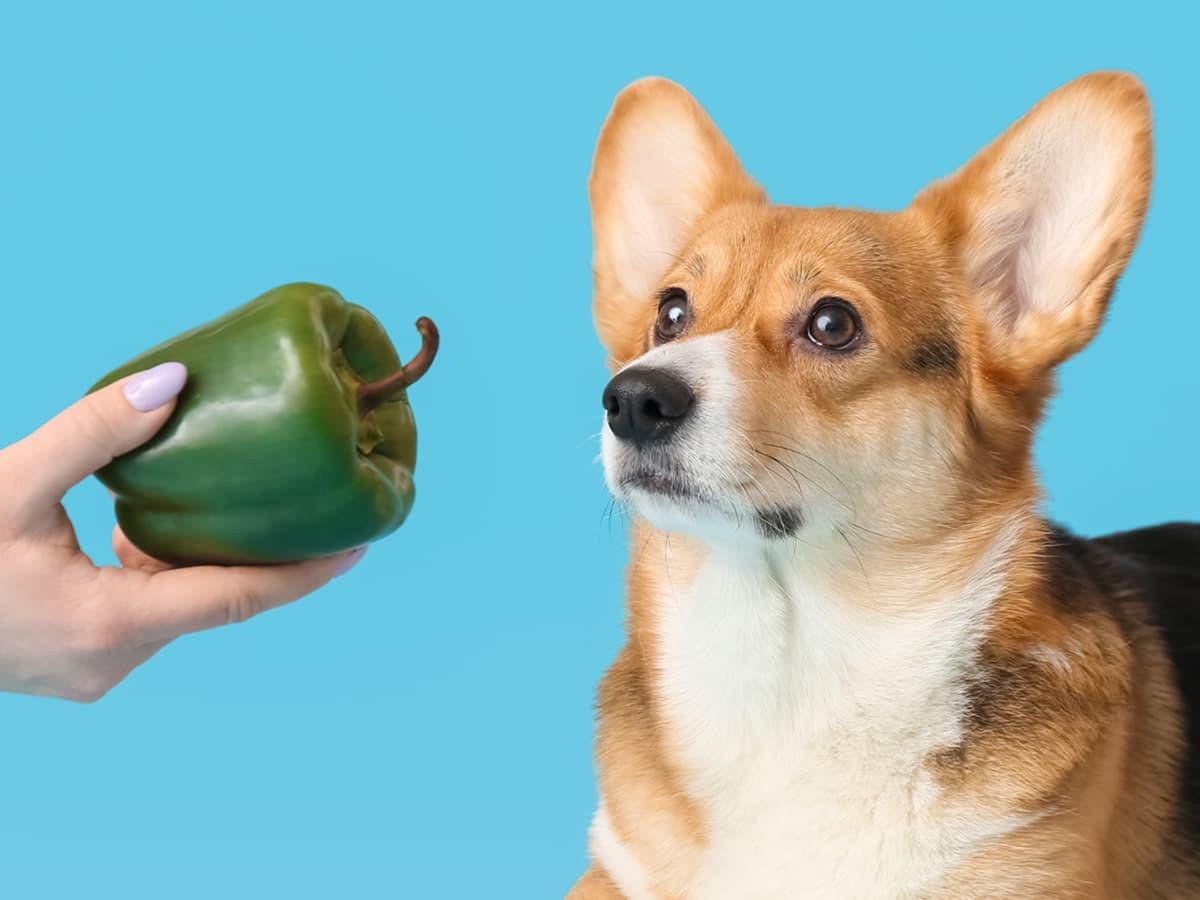Are Peppers Safe for Your Dog?
Peppers are a delicious and nutritious food to add to a diet. They come in a range of types and colors and have varying vitamins, nutrients, and other compounds that help keep your dog active and thriving. However, even though you know peppers are good for you, are they good for your dog? Let’s explore.
Types of Peppers and Whether Each Is Safe for Dogs
You can never be too careful! Check this list before giving a pepper to your dog.
Bell Peppers – Safe
Red Peppers – Safe
Yellow Peppers – Safe
Orange Peppers – Safe
Green Peppers – Safe
Jalapeño Peppers – Avoid
Chili Peppers – Avoid
Bell peppers and all the other colors and types of peppers contain essential vitamins and minerals to keep your dog nutritionally content. However, red peppers have the highest concentration of vitamins and antioxidants. The spicy varieties, such as jalapeños and chili peppers, will cause digestive upset to your pup. Think about how you feel if you’ve eaten something with too many hot, spicy peppers in it! You don’t want your dog to go through that. Stick with the sweeter, more tame varieties.
Some of the particular vitamins and essential nutrients that peppers have are:
Vitamin A – Great for improving eye health
Vitamin E – Improves skin and coat
Vitamin B6 – Gives extra energy to your dog
Vitamin C – Supports a healthy immune system
Beta-carotene – Strengthens vision and eye muscles
Various antioxidants – Helps your dog detox from negative environmental compounds
How to Serve Peppers to Your Dog
Of course, too much of a good thing isn’t always better. How many bell peppers or other types of peppers should you give your dog? Usually, about half of a regular-sized pepper is fine for a large dog, while one-quarter of a pepper or less is appropriate for a small dog. No matter the amount, make sure you’re offering the peppers in pieces that your dog can manage without choking.
Again, these should be sized appropriately to the dog’s size, and always remember that you know your pup best. Even some large dogs inhale their food too quickly and need encouragement to consume it more slowly to prevent choking.
The seeds of peppers can cause indigestion in canines (and in people!), so if you have the time and energy, it’s best to scrape these out first. Furthermore, you don’t need to season these delicious veggies with anything else! Dogs will enjoy the taste just as they come. Excess amounts of salt aren’t good for dogs, and anything containing onion or garlic can be extremely harmful.
The skin on bell peppers is sometimes tough and can be hard for a dog to chew. Thus, you can steam them or even purée the bell peppers to make them easier to consume. Adding a veggie purée to a dog’s dry food can soften it and make it easier for them to digest.
Peppers are prone to soaking up pesticides, so it’s always best to buy organic—both for yourself and your dog. However, organic produce isn’t always available and is sometimes expensive. So, wash and rinse it well if you need to purchase regular produce.
Furthermore, it’s best to serve your dog fresh veggies. The fresher the produce, the more nutrients and vitamins it contains. You never want to give your pup something moldy, or that is beginning to rot. It’s okay to feed them something that is a bit overripe, but if it’s bad, throw it out.
Offering New Foods to Your Dog
Whether or not a food is vet-approved for a dog’s diet, it should always be given the first time with caution. Dogs can have allergies and food sensitivities, too! When you offer peppers to your pooch for the first time, give a small portion (even if you have a bigger dog) and watch them closely for signs of irritability, itchiness, digestive frustration, or other negative reactions. A trip to the vet or the pet hospital is in order if they begin to have trouble breathing or become lethargic. Otherwise, offer them plenty of fresh water and a place to relieve themselves easily.
Your pet’s diet doesn’t need to consist mainly of vegetables. In the wild, dogs are omnivorous, but they mostly eat protein. This means fresh veggies are just a nutritionally rich supplement that benefits their diet without facilitating all their nutritional needs. Most animal experts agree that following the 90/10 rule is the best way to ensure your dog is healthy and happy. Most of their food should be wet or dry kibble, while the other 10 percent can be from new and exciting foods and treats.
Other Vegetables That Your Dog Can Safely Eat
Of course, when adding extras to your dog’s diet, you want those things to be healthy and to pack a nutritional punch! What are some of the other vegetables that are safe for dogs to eat? Luckily for you, the list is long!
Broccoli – Broccoli is one of those green veggies full of many vitamins, including calcium! Steam or purée it to make it easier to chew up or use the smaller pieces as training treats for Fido.
Celery – Celery is also a great veggie to cut up into small pieces and toss to your dog when you’re doing behavior or obstacle training. If you want to offer slightly bigger pieces with a dab of peanut butter, it’s sure to keep them happy for a while!
Spinach – Some dogs don’t like spinach, but those that do will get a high amount of calcium and vitamins. You can sauté spinach, too, and add it to chicken and rice for a balanced meal.
Green Beans – Green beans are a delicious treat! If they’re cooked, your dog will probably have an easier time digesting them.
Carrots – Carrots are a sweet treat since they contain natural sugar that isn’t bad for dogs! Just make sure you aren’t overdoing it and that your dog doesn’t struggle with weight or diabetes.
Peas – Peas are full of healthy protein as well as vitamins! They also have a decent amount of sugar, so ensure that when you give peas, you balance the offering with something else.
Sweet Potatoes: Features a high amount of fiber, which is great for promoting gut health in your pooch.
What Your Dog Can’t Eat
Of course, some vegetables aren’t good for canines. These include:
You should never give your dog raisins, grapes, or chocolate. (That can never be said enough!) Luckily, plenty of produce items available for your pup will keep them healthy and thriving for many years.
Conclusion
You probably love tossing peppers into some of your meal dishes and enjoying the nutritional and taste benefits. Your dog will, too! Keep your pepper offerings tame, and make sure to remove the seeds. Even though these veggies are a healthy addition, your pup’s main sustenance should always come from their regular dog food. However, you can feel good about sharing bell peppers, red peppers, yellow peppers, and green peppers with your furry friend. They’ll thank you for it!

With 10 years of experience as a pet parent, I aim to empower pet owners with insights into pet insurance and maintaining their pet's well-being. I aspire to be a trusted source, combining knowledge with a commitment to the welfare of our beloved pets.
Anastasio, Alexandra. "Can Dogs Eat Bell Peppers?" American Kennel Club, 12 Sep. 2025, https://www.akc.org/expert-advice/nutrition/can-dogs-eat-bell-peppers/.
AKC Staff. "Fruits and Vegetables Dogs Can or Can't Eat." American Kennel Club, 15 Oct. 2025, https://www.akc.org/expert-advice/nutrition/fruits-vegetables-dogs-can-and-cant-eat/.
The information presented in this article is for educational and informational purposes only and does not constitute or substitute for the advice of your veterinarian.












